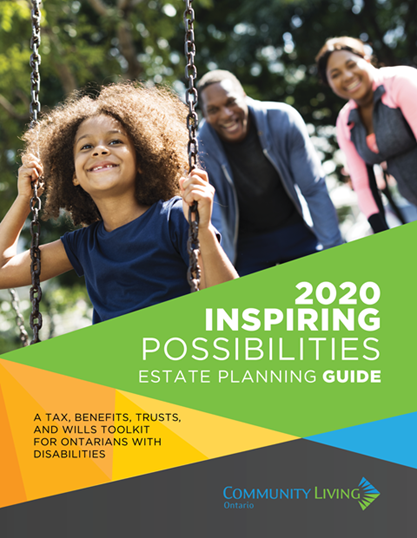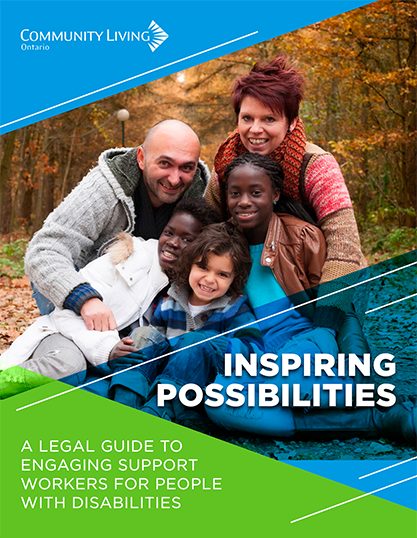Since the Spring of 2020, employers in congregate care settings have been relying on guidance documents issued by the Provincial Ministry of Health for best practices in reducing the risk of COVID-19. These guidance documents have periodically been revised or overhauled in the years since, with the last major update occurring on June 10, 2022.
On October 6, 2022, however, the Ministry of Health once again replaced the document with a new (though in many ways, similar) version.
Download the updated guidance document here.
In this article, we will walk through the key changes in the new document. The points below are the highlights, but as always, the document contains much more detailed information and any applicable agency is encouraged to review it.
Merging with Long-Term Care and Retirement Home Guidance?
The most noticeable change in the new document is that it has merged with three older guidance documents: one for long-term care homes, one for retirement homes, and one for other types of congregate living settings (CLSs) supporting vulnerable people. This change likely reflects a convergence of the public health guidance affecting each of these congregate settings (though specialized sections do remain in the new document).
Who is the Guidance For?
While the guidance currently is targeted at providing guidance to local public health units who advise or supervise CLSs, the guidance can also be taken as guidance for those living settings as well. This is backed up with specific recommendations for CLSs.
Is the Guidance Binding?
The short answer is “maybe”. While emergency legislation that clearly made these documents binding was allowed to expire in the Spring, there is arguably an ongoing obligation for developmental services agencies to follow the guidance under both the Occupational Health and Safety Act and the Quality Assurance Measures regulation. This is because both of these pieces of legislation require an employer to take reasonable measures to protect the health and safety of people in the CLS.
In any event, it is a good idea to follow the guidance as a best practice, and the guidance document itself tells CLSs to follow it. We may see the Ministry of Community, Children and Social Services (“MCCSS”) and local public health units also insist that agency follow the guidance.
What Does the Guidance Require?
The guidance document has a number of general requirements, including that agencies continue to implement measures found in the guidance and to follow the directions of local public health units in the event of an outbreak. It also requires general infection prevention and control measures to continue, though it cautions that these measures should respect the physical, mental, emotional, and psychosocial well being of residents.
The guidance also has a number of specific recommendations:
1. Serious Occurrence Reporting
There is a new, explicit requirement that Agencies operating CLSs that are licensed, funded, and directly operated by the MCCSS are to report any communicable disease (which would include COVID-19, influenza, etc.) that requires unscheduled medical attention by a professional and/or an unplanned hospitalization to the MCCSS through Serious Occurrence Reporting no later than 24 hours after becoming aware of the serious incident. This report must include confirmation of the preventative measures that have been taken by the Agency to stop the spread of the disease, and any follow-ups recommended by and/or conducted with public health officials.
2. Outbreak Preparedness Plans
Agencies should continue to keep outbreak preparedness plans in place. These should detail how the guidance will be implemented and address contingencies the Agency may face in an outbreak. It is worth noting that almost all agencies in the sector will likely now have these policies in place after three years of the pandemic.
3. Self-Auditing Encouraged
Agencies operating CLSs that are not long-term care or retirement homes are encouraged to perform regular self-audits. The document contains links to the appropriate resources to perform these.
4. Vaccination Remains Encouraged, But Not Required
The guidance continues the prior guidance’s statement that vaccination is encouraged for all stakeholders, but not required. Interestingly, it encourages “up to date” vaccination, but the document linked to provides an out-of-date definition of what “up to date” vaccination means. The Province previously defined being “up to date” as receiving all booster doses for which a person was eligible. That was recently changed to having received a primary series of COVID-19 vaccine and a vaccine dose within the past 6 months. The former definition is linked in the guidance.
5. Screening Requirements Are Somewhat Vague
While the new guidance continues to strongly encourage passive screening for COVID-19, the language used does not indicate that the Ministry is strongly encouraging active screening for CLSs that are not long-term care or retirement home settings. This is likely an unintentional omission, and Agencies should feel confident in continuing to require active screening if they deem it necessary.
Agencies continue to be encouraged to assess people supported who live in the CLS at least once daily to identify new or worsening symptoms, or opportunistically if they provide service to a large or transient community.
6. Hand Washing and Distancing Still Encouraged
Hand hygiene remains encouraged, and hand washing or hand rub stations should be placed at multiple prominent locations within the setting with reminder signage.
In terms of physical distancing, individuals should generally be encouraged to avoid the 3 C’s where COVID-19 can spread more easily: crowded places, close-contact settings, and confined and enclosed spaces with poor ventilation. While not stated, this of course is implicitly subject to the need to provide direct support with appropriate precautions.
7. Universal Masking is Still Recommended, As is Stricter PPE as Necessary
Agencies should continue to require universal masking at all times for source control, regardless of whether the Agency is in outbreak or not. All staff and visitors are strongly recommended to wear a well-fitted surgical or procedural mask while indoors interacting with people supported or in designated living areas while on shift. Staff and visitors should also wear masks outdoors when immunocompromised individuals or individuals at a high risk of severe disease are present and physical distancing is not possible. If tolerated and safe, people supported should be offered a well-fitted medical mask (which is preferred) or a non-medical mask when in shared spaces or receiving direct care. Note, the guidance no longer provides that these masks must be provided to people supported free of charge – though doing so will clearly increase the chance that a mask will be worn. Overall, this section has been cut down and simplified significantly since the last version of the guidance document.
More comprehensive personal protective equipment (“PPE”) continues to be recommended when a staff member is in close contact with or providing direct care to a person with a confirmed or suspected case of COVID-19 or when working in an outbreak area. This should continue to include eye protection and a well fitted medical mask or N95 (or equivalent). Gloves and gown may be added based on a personal risk assessment and must be changed between clients. Staff should complete a personal risk assessment before every client interaction.
8. Environmental Cleaning and Ventilation Remain Key
The guidance continues to encourage environmental cleaning and disinfecting of high touch areas, as well as measures to increase ventilation and/or air filtration.
PooranLaw will continue to monitor legal developments related to workplace vaccination policies and provide updates online. In the meantime, if you require legal assistance in determining how these policies apply to your organization, we encourage you to reach out to your regular PooranLaw lawyer, or any member of our team.
9. Self-Isolation Rules Remain Stricter than General Public
Many in our audience may have heard that self-isolation rules for members of the general public were significantly loosened over the summer. This new guidance makes clear that older, stricter rules continue to apply in CLSs. That generally requires a ten day self-isolation after symptom onset or test collection for staff and visitors who have tested positive for COVID-19, and five days plus any certain additional time for listed symptoms to improve for people supported who reside in the setting (and ten days of masking).
Close contacts also need to wear a mask at all times in the setting (except when eating or sleeping, with distancing) for ten days after last exposure.
10. Outbreaks Defined
An outbreak is defined in the document as being two or more people supported testing positive for COVID-19 by molecular or rapid test within ten days of one another, with a common epidemiological link.
11. Rapid Testing Continues
Finally, in an appendix to the Ministry of Health guidance, MCCSS has further advised as follows:
“Dependent on test kit availability, and until further notice, CLSs are to continue use rapid antigen tests to:
• Regularly screen all staff who enter a CLS (regardless of vaccination status), in alignment with the Ministry of Health’s COVID-19 Provincial Testing Guidance:
-
- CLSs that are currently using at-home antigen screening for staff may continue to do so.
- A staff member with a positive result on a rapid antigen test will be presumed positive for COVID-19 and must not be permitted entry to the CLS. Service providers will follow existing guidance for positive case management.
- While MCCSS-funded and/or licensed CLSs have been identified by the MOH as a priority for PCR testing, where such testing is not available, any positive results from a rapid antigen test will no longer require a confirmed laboratory-based PCR or molecular point of care test (e.g., ID NOW).
- Regularly screen all visitors entering a CLS (regardless of the visitor’s vaccination status).
- A visitor with a positive result on a rapid antigen test must not be permitted entry and should be encouraged to follow public health direction for persons presumed positive for COVID-19.
- Make rapid antigen screening available for residents who return to a CLS (regardless of vaccination status) from an overnight absence.
- For clarity, it is not a mandatory requirement that returning residents undertake the test. However, service providers are strongly encouraged to promote the use of rapid antigen screening by returning residents as a measure to help protect others in the CLS.
- Testing residents who are symptomatic where PCR testing is not available in a timely manner. See Management of Cases and Contacts of COVID-19 in Ontario for additional guidance re use of RATs for individuals with symptoms of COVID-19.
This is a break from previous guidance and CLS’s are recommended to develop their own protocols for how this testing will be administered and the frequency of administration.
PooranLaw will continue to monitor developments related to COVID-19 public health and government guidance relevant to the developmental services sector. In the meantime, if you require legal assistance in determining how these guidance documents apply to your organization, we encourage you to reach out to your regular PooranLaw lawyer, or any member of our team.
Note: This article provides general information only and does not constitute, and should not be relied upon as, legal advice or opinion. PooranLaw Professional Corporation holds the copyright to this article and the article and its contents may not be copied or reproduced in any form, in whole or in part, without the express permission of PooranLaw Professional Corporation.







